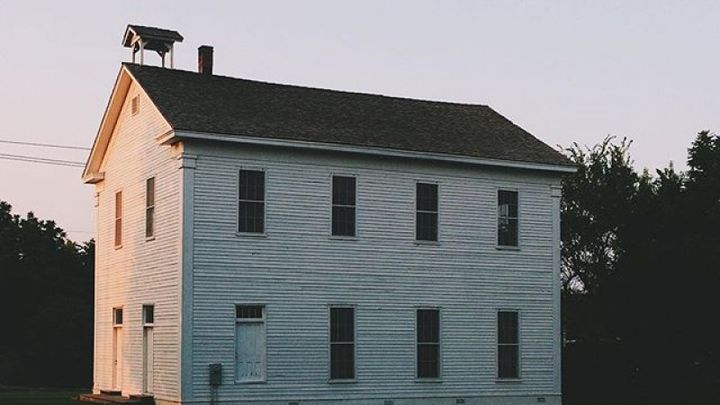
Shiloh Museum's "Overhaul the Hall"
Donation protected
Won't you lend a hand to help us save this iconic building in Northwest Arkansas?
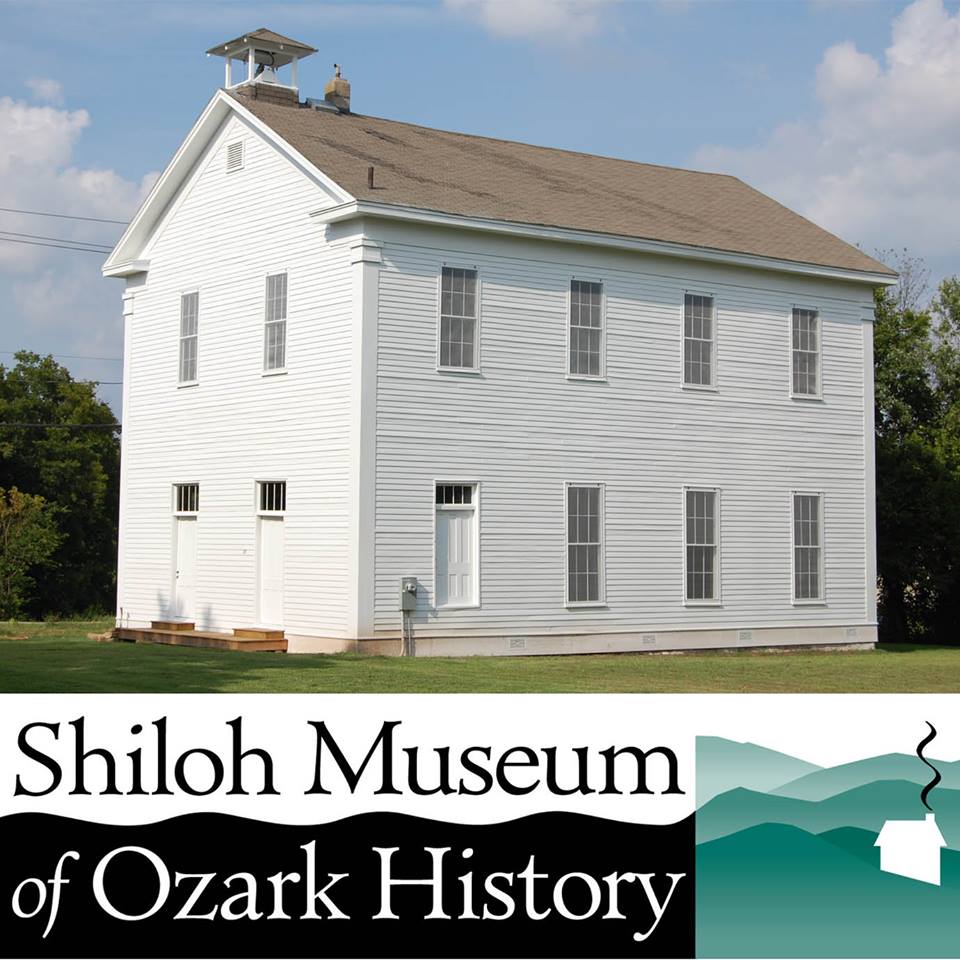
SHILOH MEETING HALL REHABILITATION "OVERHAUL THE HALL" CAMPAIGN
Why It Matters
The historic Shiloh Meeting Hall, formerly called the Shiloh Church and the Odd Fellows Lodge, is one of the oldest and most significant buildings in Northwest Arkansas.
Dominating a knoll in downtown Springdale, it has been a meeting place for three churches (two still exist), the local Masonic lodge (still exists), the Women’s Civic Club, and the New Era Lodge of the Independent Order of Odd Fellows, at one time the largest lodge in the State.
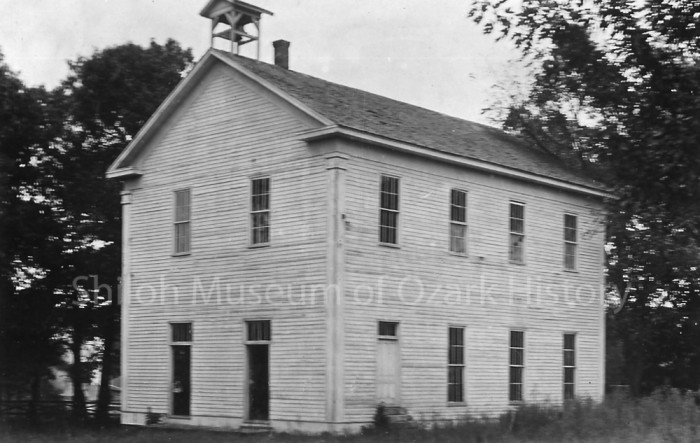
It was built in 1871, constructed of timber from the historic Van Winkle mill near War Eagle. Today it draws attention to the city’s vibrant past while standing as a testament to the enduring values of faith, service, and community. But its future is in jeopardy.
At the Crossroads
In 2005 the building was donated to the Shiloh Museum of Ozark History, conditional on its renovation for use. Architectural plans have been developed to turn the building into a meeting space and exhibit hall for the museum and the community.
Many history-related groups are already anxious to meet in the building and downtown Springdale is quickly becoming a go-to destination for meetings, magnified by the recently completed trailhead for the 36-mile Razorback Regional Greenway which runs right by the building.
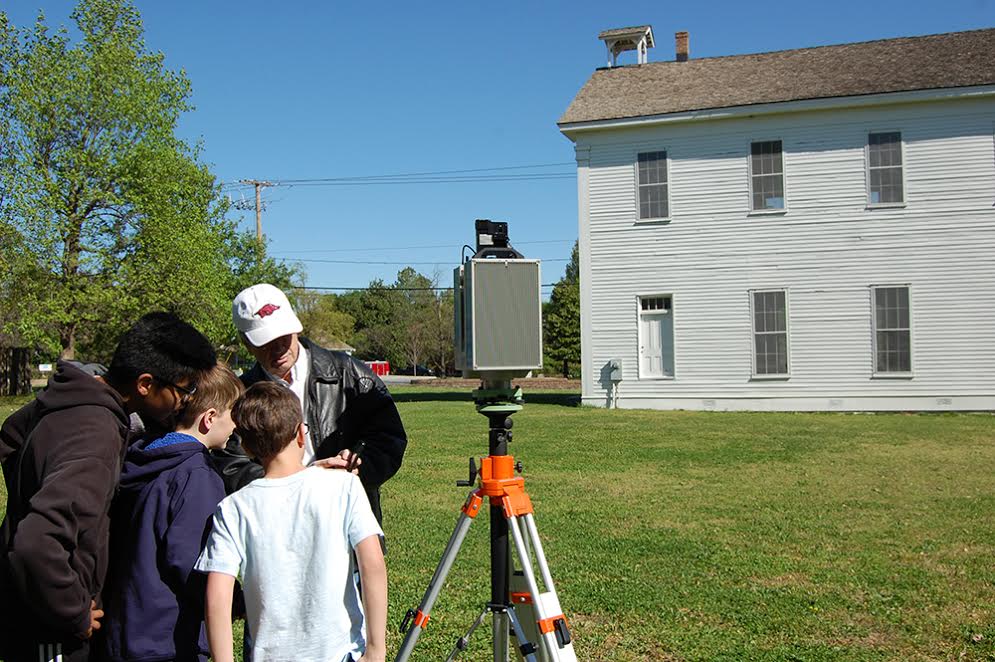
Rehabilitation of the building's exterior, roof, chimney, and belfry was completed in 2009 after raising nearly $200,000.
The Shiloh Museum of Ozark History is now undertaking a campaign to raise an additional $1 million to complete interior renovations, landscaping, signs, lighting, and parking, to help with maintenance costs, and to bring the historic building back to life.
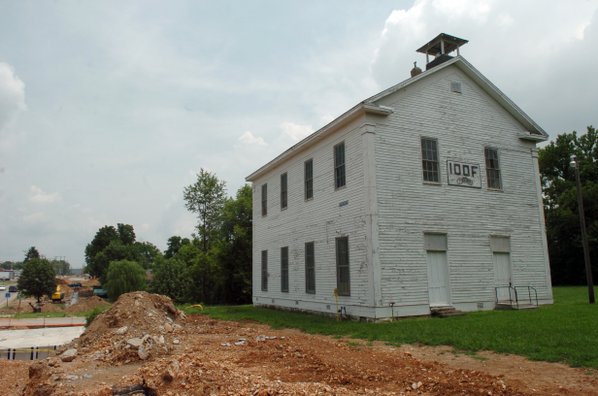
The $1 million fundraising campaign initiated in 2015 now stands at just over $716,000. We're now encouraging the public to help us save this icon of local history.
Following rehabilitation, the Shiloh Meeting Hall will become a place to gather, a place to learn, and a place dedicated to the history AND the future of Springdale and Northwest Arkansas.
How You Can Help
You can help by making a generous donation to our GoFundMe page, writing a check, making a pledge over three years (2016-2018), contributing appreciated equities, or donating other valuable assets in support of the Shiloh Meeting Hall Campaign. Other kinds of donations may be made in person at the museum.
Your support wil help the Shiloh Museum fulfill its mission to "serve the public by preserving and providing resources for finding meaning, enjoyment, and inspiration in the exploration of the Arkansas Ozarks."
Contact Us
Shiloh Museum of Ozark History
118 W. Johnson Ave.
Springdale, AR 72764
479-750-8165
shilohmuseum.org
[email redacted]
Contact the museum's director, Allyn Lord, via email at [email redacted].
Thank you for your support!
A Brief History of the Museum
The Shiloh Museum began in 1965 with the City of Springdale's purchase of a significant body of Native American artifacts collected over a period of 60 years by Springdale resident Guy Howard. The collection contained some 10,000 prehistoric and historic artifacts and 260 books and pamphlets on anthropology and archeology. The collection was moved into a building vacated by the City. With guidance from the staff of the University of Arkansas Museum, volunteers interested in archaeology identified, classified, and cataloged the objects.

The City soon hired an amateur archeologist on a part-time basis and appointed a board of trustees. The first bylaws were approved in May 1968. On September 7, 1968, the museum opened to the public. The name chosen for the museum was Shiloh, the name of the settlement and church established in the 1840s on the site of present-day Springdale. As stated in the first bylaws, the principal purposes of the museum were to acquire and display items of historical value and to encourage and promote historical and cultural interest in the Springdale area. In the years ahead, the museum's field of interest expanded beyond Springdale to include more and more of the Ozark region.
The museum grew slowly through the 1970s. In 1980, an enlarged board became more active, and a full-time professional director was hired. Thereafter, several innovations made the museum more visible: new educational programs (including a lecture series, crafts workshops, and tours for school classes); an aggressive exhibit scheme; and a series of successful grant proposals. Seven federal grants during the 1980s were of significant help to the museum, increasing its prestige and aiding it in growing the staff and increasing services. One special program funded by federal grants was the Vanishing Northwest Arkansasphoto collection project. By 1993, that project had resulted in a collection of over 100,000 images and, as a result, earned an Award of Merit from the American Association for State and Local History.
In the early 1980s, property adjoining the museum was acquired by purchase and bequest, and the museum reached its present boundaries: a city block of two acres (which includes the historical town square of the community). In the 1980s, four historical buildings (1850s log cabin, 1870s general store, 1870s country doctor's office, and 1930s outhouse) were moved onto the property and arranged along an appropriate axis, taking advantage of interesting changes in elevations and complementing an 1870s (remodeled in 1938) home already on the property. The entire site is enriched by some of the oldest trees in the city.
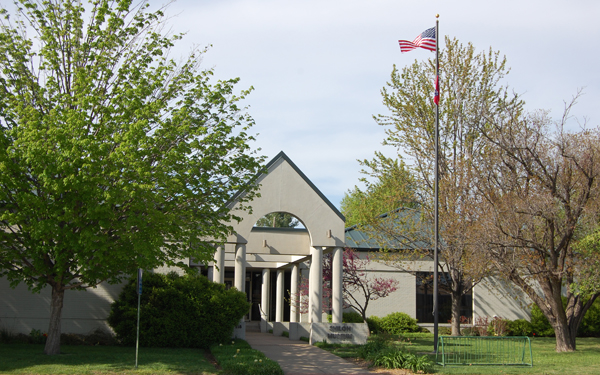
In 1991, after five years of fund raising and construction, the museum moved into a new 22,000 sq. ft. ($1.1 million) building. These developments allow the museum to accomplish its statement of purpose more completely. In 1993, the board changed the name to "Shiloh Museum of Ozark History" in order to more clearly define its scope for potential visitors. In 1995, a 1920s barn with attached sheds (for our antique farm machinery) was moved onto the site. In 2005, the New Era Lodge #36 of the Independent Order of Odd Fellows donated their meeting hall, originally the historic Shiloh Primitive Baptist Church, to the museum. The two-story frame building is located one block north of the Shiloh Museum.
The City of Springdale remains the museum's main source of financial support, but approximately two-thirds of the members, visitors, and participants in programs live outside Springdale. The museum reaches out to other cities and counties through its collection policy and through its exhibits, programs, and research facilities.

SHILOH MEETING HALL REHABILITATION "OVERHAUL THE HALL" CAMPAIGN
Why It Matters
The historic Shiloh Meeting Hall, formerly called the Shiloh Church and the Odd Fellows Lodge, is one of the oldest and most significant buildings in Northwest Arkansas.
Dominating a knoll in downtown Springdale, it has been a meeting place for three churches (two still exist), the local Masonic lodge (still exists), the Women’s Civic Club, and the New Era Lodge of the Independent Order of Odd Fellows, at one time the largest lodge in the State.

It was built in 1871, constructed of timber from the historic Van Winkle mill near War Eagle. Today it draws attention to the city’s vibrant past while standing as a testament to the enduring values of faith, service, and community. But its future is in jeopardy.
At the Crossroads
In 2005 the building was donated to the Shiloh Museum of Ozark History, conditional on its renovation for use. Architectural plans have been developed to turn the building into a meeting space and exhibit hall for the museum and the community.
Many history-related groups are already anxious to meet in the building and downtown Springdale is quickly becoming a go-to destination for meetings, magnified by the recently completed trailhead for the 36-mile Razorback Regional Greenway which runs right by the building.

Rehabilitation of the building's exterior, roof, chimney, and belfry was completed in 2009 after raising nearly $200,000.
The Shiloh Museum of Ozark History is now undertaking a campaign to raise an additional $1 million to complete interior renovations, landscaping, signs, lighting, and parking, to help with maintenance costs, and to bring the historic building back to life.

The $1 million fundraising campaign initiated in 2015 now stands at just over $716,000. We're now encouraging the public to help us save this icon of local history.
Following rehabilitation, the Shiloh Meeting Hall will become a place to gather, a place to learn, and a place dedicated to the history AND the future of Springdale and Northwest Arkansas.
How You Can Help
You can help by making a generous donation to our GoFundMe page, writing a check, making a pledge over three years (2016-2018), contributing appreciated equities, or donating other valuable assets in support of the Shiloh Meeting Hall Campaign. Other kinds of donations may be made in person at the museum.
Your support wil help the Shiloh Museum fulfill its mission to "serve the public by preserving and providing resources for finding meaning, enjoyment, and inspiration in the exploration of the Arkansas Ozarks."
Contact Us
Shiloh Museum of Ozark History
118 W. Johnson Ave.
Springdale, AR 72764
479-750-8165
shilohmuseum.org
[email redacted]
Contact the museum's director, Allyn Lord, via email at [email redacted].
Thank you for your support!
A Brief History of the Museum
The Shiloh Museum began in 1965 with the City of Springdale's purchase of a significant body of Native American artifacts collected over a period of 60 years by Springdale resident Guy Howard. The collection contained some 10,000 prehistoric and historic artifacts and 260 books and pamphlets on anthropology and archeology. The collection was moved into a building vacated by the City. With guidance from the staff of the University of Arkansas Museum, volunteers interested in archaeology identified, classified, and cataloged the objects.

The City soon hired an amateur archeologist on a part-time basis and appointed a board of trustees. The first bylaws were approved in May 1968. On September 7, 1968, the museum opened to the public. The name chosen for the museum was Shiloh, the name of the settlement and church established in the 1840s on the site of present-day Springdale. As stated in the first bylaws, the principal purposes of the museum were to acquire and display items of historical value and to encourage and promote historical and cultural interest in the Springdale area. In the years ahead, the museum's field of interest expanded beyond Springdale to include more and more of the Ozark region.
The museum grew slowly through the 1970s. In 1980, an enlarged board became more active, and a full-time professional director was hired. Thereafter, several innovations made the museum more visible: new educational programs (including a lecture series, crafts workshops, and tours for school classes); an aggressive exhibit scheme; and a series of successful grant proposals. Seven federal grants during the 1980s were of significant help to the museum, increasing its prestige and aiding it in growing the staff and increasing services. One special program funded by federal grants was the Vanishing Northwest Arkansasphoto collection project. By 1993, that project had resulted in a collection of over 100,000 images and, as a result, earned an Award of Merit from the American Association for State and Local History.
In the early 1980s, property adjoining the museum was acquired by purchase and bequest, and the museum reached its present boundaries: a city block of two acres (which includes the historical town square of the community). In the 1980s, four historical buildings (1850s log cabin, 1870s general store, 1870s country doctor's office, and 1930s outhouse) were moved onto the property and arranged along an appropriate axis, taking advantage of interesting changes in elevations and complementing an 1870s (remodeled in 1938) home already on the property. The entire site is enriched by some of the oldest trees in the city.

In 1991, after five years of fund raising and construction, the museum moved into a new 22,000 sq. ft. ($1.1 million) building. These developments allow the museum to accomplish its statement of purpose more completely. In 1993, the board changed the name to "Shiloh Museum of Ozark History" in order to more clearly define its scope for potential visitors. In 1995, a 1920s barn with attached sheds (for our antique farm machinery) was moved onto the site. In 2005, the New Era Lodge #36 of the Independent Order of Odd Fellows donated their meeting hall, originally the historic Shiloh Primitive Baptist Church, to the museum. The two-story frame building is located one block north of the Shiloh Museum.
The City of Springdale remains the museum's main source of financial support, but approximately two-thirds of the members, visitors, and participants in programs live outside Springdale. The museum reaches out to other cities and counties through its collection policy and through its exhibits, programs, and research facilities.
Organizer and beneficiary
Susan Young
Organizer
Springdale, AR
Shiloh Museum
Beneficiary


